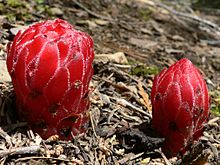Housing the world’s population of more than seven billion people, the construction industry today has grown to consume more of the earth’s resources than any other human activity.1 As such, there has been growing industry awareness to replenish the earth’s resources while reducing the carbon footprint of the built environment. Now more than ever, building professionals are increasingly being called upon to identify products that both meet sustainability requirements and offer a history of the necessary structural performance needed for projects – a balance that is often quite a challenge. The good news is that green building trends are driving a need for, and the creation of, third-party verified information that allows a simplified approach to understanding the potential environmental performance of building products.
EMERGENCE OF ENVIRONMENTAL PRODUCT DECLARATIONS
Availability of standardized measurements for the environmental performance of building materials – including wood products – is likely to influence more purchasing decisions as the green building industry becomes more stringent in the coming years. One standardized approach for measurement has been provided by Environmental Product Declarations (EPDs) – a reporting method used for conveying in simple terms the potential environmental performance of building materials. Based on international standards (ISO 14025), EPDs have established credibility and worldwide applicability for measuring the environmental impact of building materials across its lifecycle – either cradle-to-gate or cradle-to-grave. Based on life-cycle assessment (LCA) – EPDs describe everything from resource and energy use, to global warming potential, air emissions, soil, water, and waste generation.
LIFE-CYCLE ASSESSMENT OF BUILDING PRODUCTS
Life-cycle assessments have shown wood products to have significant environmental benefits with a lighter footprint, lower production of greenhouse gas emissions, and energy efficient advantages for structures. For the purpose of business-to-business EPDs, life-cycle assessment is conducted for cradle-to-gate performance: taking a look from the extraction of raw materials to the factory “gate” or the point at which the product or material has been manufactured and is ready for shipment. By definition, an EPD for a commodity product like lumber can only be cradle-to-gate because the manufacturer may not be able to characterize how the product is used after it is sold.
Showcasing these benefits, last year the American Wood Council and Canadian Wood Council together released nine third-party verified EPDs and transparency briefs that describe the potential environmental impacts and manufacturing energy consumption for wood products. The EPDs take into account everything from composition and life-cycle environmental impacts to water and energy usage, along with other product information – all in a standardized format that makes it easier for construction professionals to digest. All North American wood industry EPDs are independently third-party verified by UL Environment (ULE), a business unit of Underwriters Laboratories, ensuring conformance to requirements of ISO 14025. The nine EPDs were created for wood products including: softwood lumber, softwood plywood, oriented strand board (OSB), glued laminated timber (Glulam), laminated veneer lumber (LVL), wood I-Joists, redwood decking, medium-density fiberboard, and particleboard products. On a similar vein, transparency briefs have been created to summarize the most critical data presented by the EPDs, with the intent of providing construction professionals a quick way to identify key product details based on environmental data.
PRODUCT EVALUATION & BUILDING CODES
While, some environmentally conscious construction professionals are already doing their own research regarding the environmental and structural performance of building products, this can be a daunting and time-consuming process depending on the size and scope of building projects. To help alleviate this, EPDs are playing a larger role in simplifying these decisions. Several building codes are driving demand for verified LCA information on products, notable examples include LEED v4, the California Green Building Code (CALGreen), the International Green Construction Code (IgCC) for commercial buildings, and the International Code Council’s ICC 700—the National Green Building Standard aimed at residential and multifamily construction. This list is expected to continue to grow in the future; however in the short term EPDs are already allowing construction professionals better ability to evaluate and compare leads in an informed and timely manner.
Whether you are a builder, designer, or consumer, you want to know about the products you specify and use. EPDs are a transparent and unbiased way to ensure buildings are meeting the stringent green building requirements in today’s construction environment. For more information, download EPDs from AWC for your use and future reference.
Kenneth Bland, PE, is the vice-president of code and regulations for the American Wood Council (AWC). He served as building official of Keene, New Hampshire prior to joining AWC in 1988.
1 reThink Wood Infographic, “Wood Reduces the Environmental Impact of Buildings,” October 2013.
Report by;
BY KENNETH BLANDVICE PRESIDENT, CODES & REGULATIONSAMERICAN WOOD COUNCIL
For further information log on website:
http://www.constructormagazine.com/how-wood-products-reduce-constructions-impact-on-the-environment/












